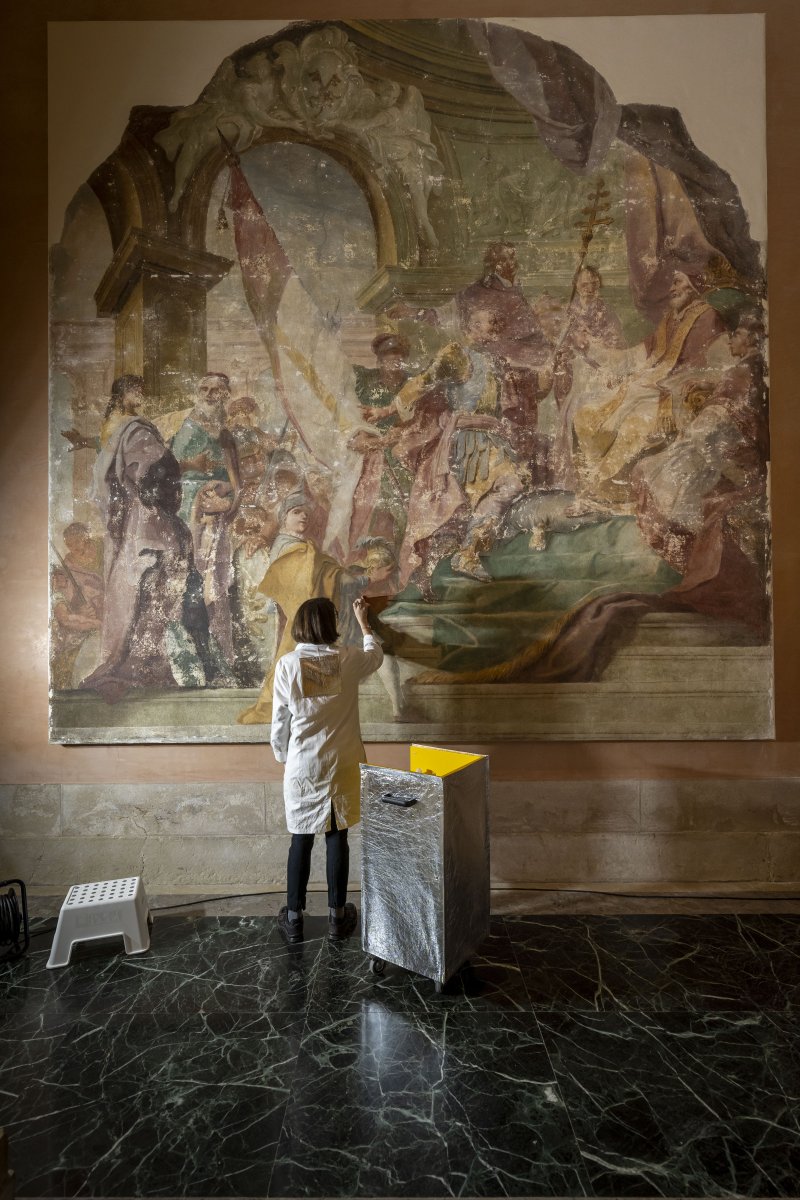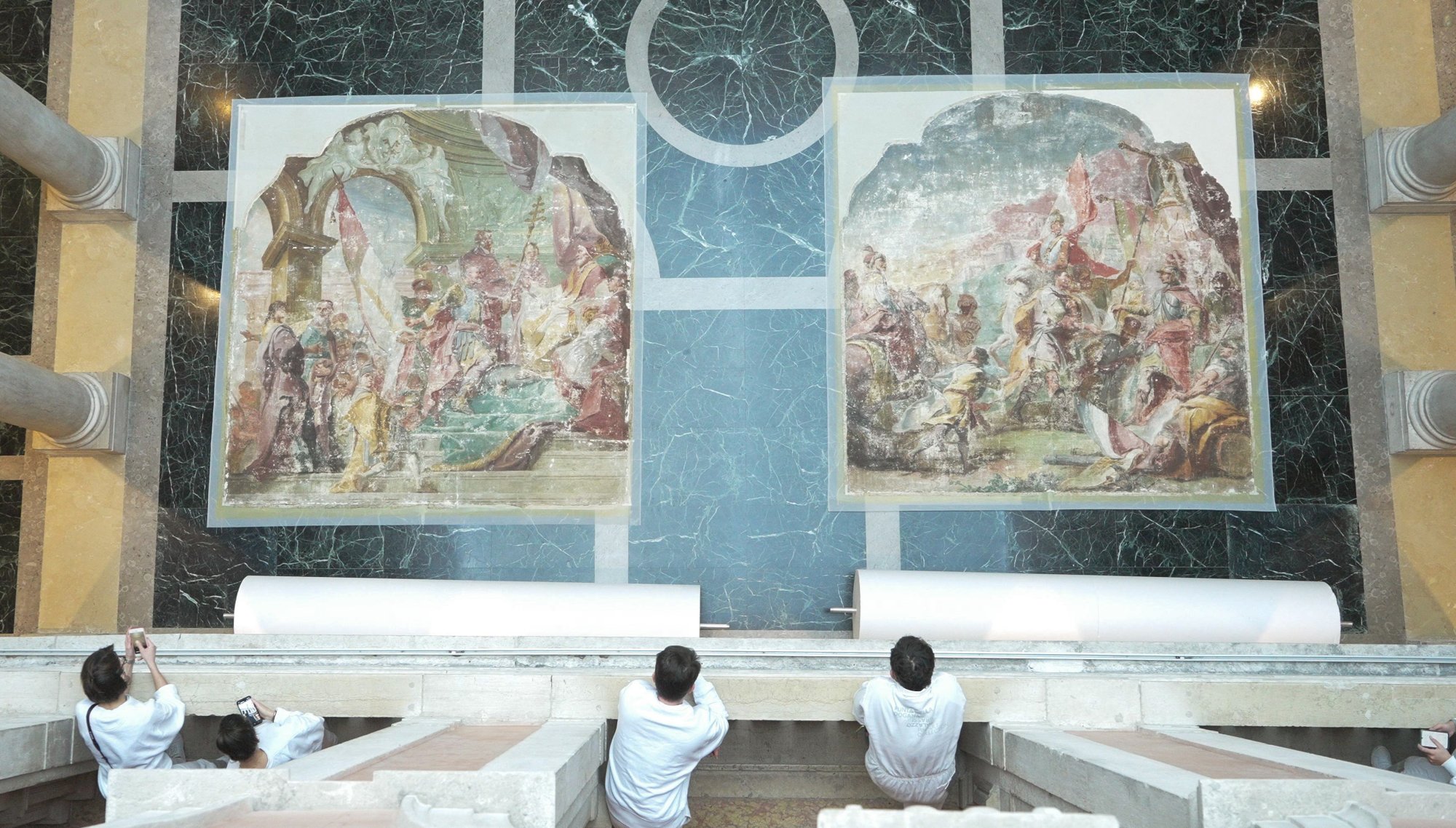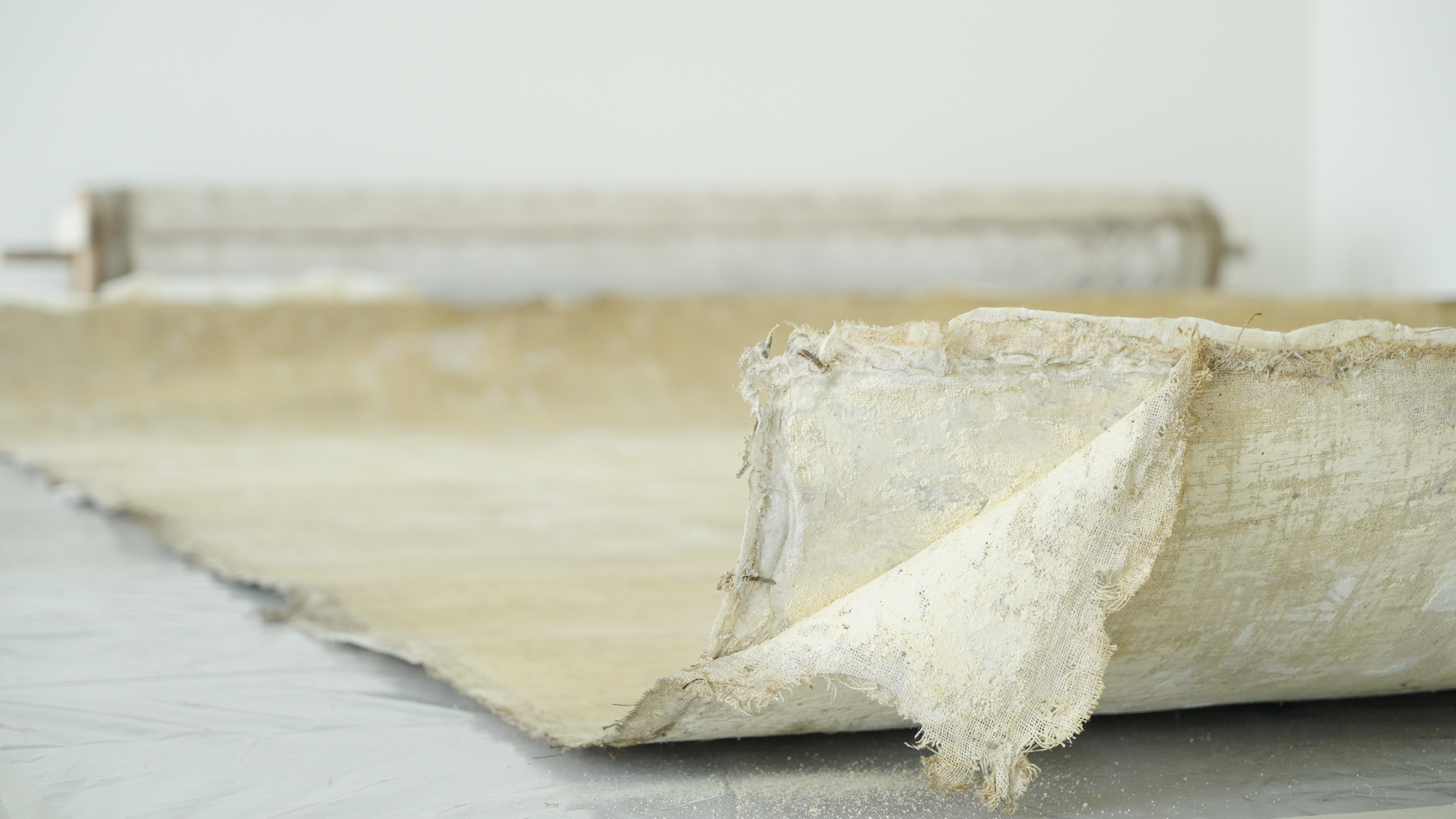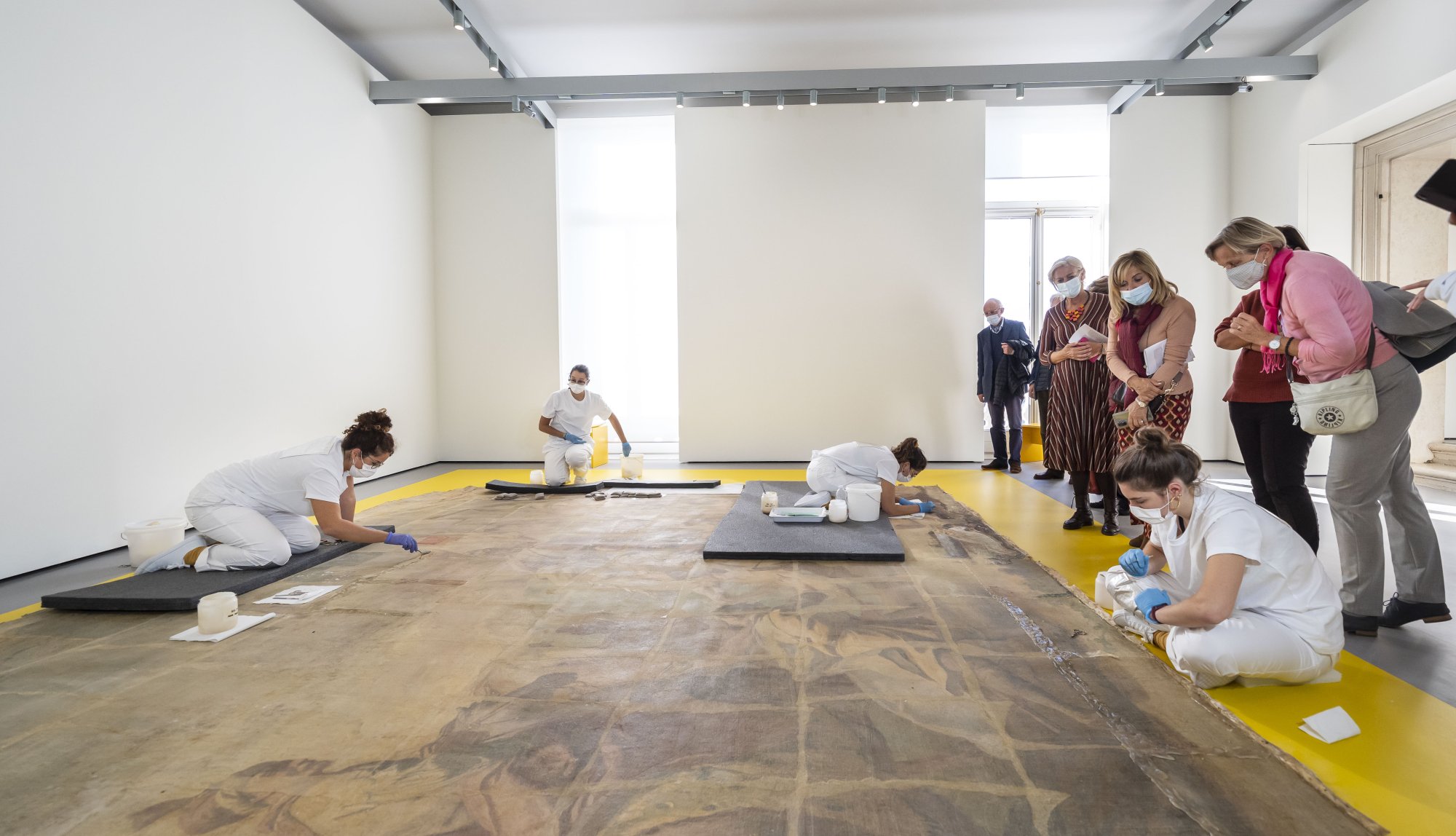A project for the preservation of heritage: Strappi
Through these frescoes, a new chapter in the history of the building is told to the public, underlining how this space, which has become institutional and despite the diversity of its successive ownerships, has been operating as an ancient and contemporary building site for more than seventy years.
In the 1950s, three frescoes from Villa Colleoni Capigliata in Calusco d'Adda were brought to Palazzo Grassi to decorate the walls of the small atrium.
The wall paintings were purchased by the family of entrepreneur Franco Marinotti on the antiques market, and are the work of Como artist Carlo Innocenzo Carloni, a well-known collaborator of Giulio Quaglio, who worked in Venice, Udine, Ljubljana and Vienna. The works date to around the middle of the 18th century - between 1740 and 1745 - and decorated the villa before it fell into disrepair and the frescoes were torn off for reasons of poor conservation.
The subjects of the three wall paintings are based on episodes from the life of Bartolomeo Colleoni, a captain of fortune from Bergamo and condottiere of the Venetian Republic. They depict, respectively: Emperor Frederick III receiving a safe-conduct from Colleoni to travel to Rome, Colleoni receiving the scepter of command from the Doge, and finally Colleoni in an audience with Pope Paul II, who is entrusting him with the task of fighting the Turks.
In 1951, Palazzo Grassi hosted an exhibition space for the first time, becoming the headquarters of the International Centre for Arts and Costume under the guidance of Marinotti, whose acquisition of Carlo Innocenzo Carloni's mural works was part of the project to enhance the property undertaken together with other changes such as the marble repaving of the atrium and the commissioning of the Murano glass sphere veil to the Venini factory.
Starting in 2020, Palazzo Grassi has promoted a restoration campaign on two of its frescoes in order to display them once again to the public in the space that was initially dedicated to them: the small atrium of the palazzo. Through these mural paintings, a hitherto unpublished chapter in the history of the Palazzo is told to the public, underlining how this space that has become institutional, despite the diversity of its successive ownerships, has been operating for more than seventy years as an ancient site - the building - and a contemporary one - its exhibitions and collections - but also as a place for artistic operations that bear witness to the history of the arts, taste and collecting, and with the sensitivity of the times.
The desire to stage, in the rooms on the top floor, the restoration operations, carried out by Martina Serafin, Paolo Roma and Laura Ruggieri of Seres Srl and Mauve Srl, of an eighteenth-century body of work interrogates the nature of the museum starting from its history, made first and foremost by works of art.
The desire to make museum visitors take part in all the stages of the recovery of the frescoes, exhibiting the meticulous technique of restoration, is intended to reflect on the time of the image and its transmission, to which Carloni's frescoes are an instrument and testimony. This two-act exhibition offered the opportunity firstly of a direct visual approach to the work of discovery and study by the restorers and secondly of the part that concerned the colour additions, once they had been hung on the walls of the small atrium.
Palazzo Grassi wanted to give a coherent overall vision, calling on the design studio Zaven to study the layout of the building site in all its forms: from the work clothes of the workers - by Atelier Anthony Knight - to the choice of materials.
At the same time, the initiative triggered the need for an art-historical documentation of the frescoes and their history, which was curated by Stefano Colombo and which, together with the restoration report, was presented to the public during an open talk held at the Teatrino di Palazzo Grassi. On the same occasion, the documentary made by Maco Film (18') that follows the entire project in all its stages was screened.
Strappi: an open restoration site at Palazzo Grassi
Public talk dedicated to the recovery of Carlo Innocenzo Carloni's frescoes at Palazzo Grassi



